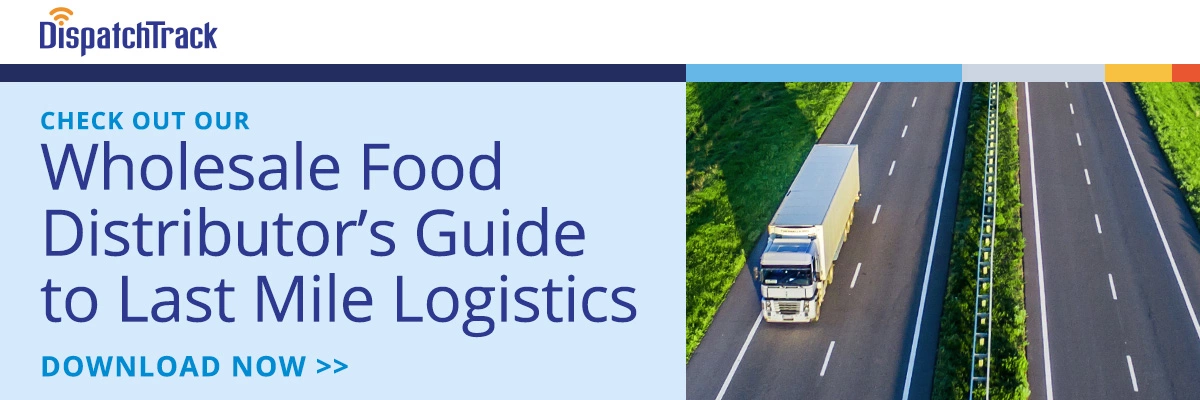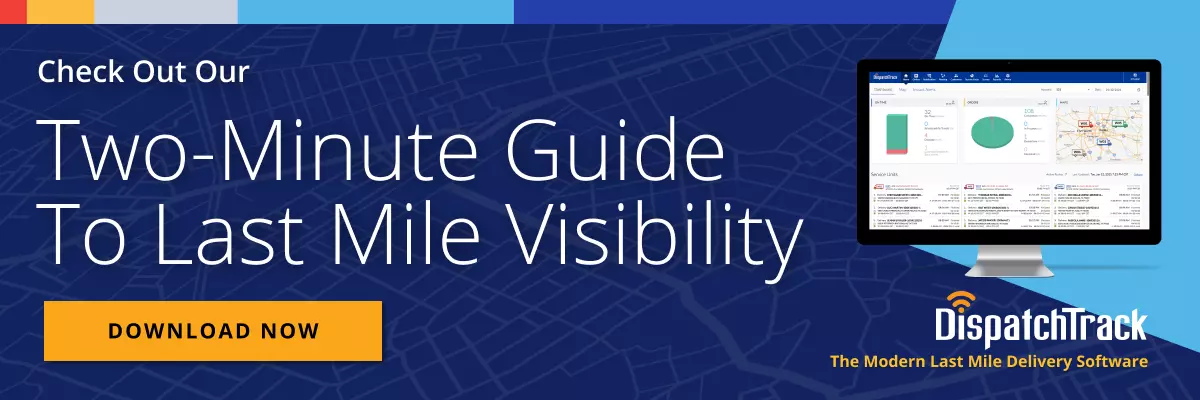Delivering on time while maximizing your capacity is no mean feat—you need the right technology to make it possible. For most last mile and delivery management platforms, the right technology boils down to a simple concept: dynamic route optimization.

Anyone who’s ever routed trucks by hand knows that effective, AI-powered route optimization does things that a human planner simply can’t. Modern platforms can account for traffic patterns, driver skill levels, variable service time estimates, and much more when generating the ideal sequence of stops for a particular delivery run. No amount of manual effort can enable you to find equally efficient routes—with accurate ETAs for each stop—in a feasible period of time.
But dynamic route optimization does have its limitations. Which is precisely why some businesses increasingly need a hybrid approach to routing.
Route Optimization: Static vs. Dynamic
Before we get into the nitty-gritty of what hybrid routing is and how it can help smooth out delivery operations in many industries, let’s look at the existing playing field when it comes to route optimization. At a high level, most businesses are choosing between two options:
- Static route plans: These are routes that are essentially repeated on a regular basis. You may update volumes or make small tweaks, but your drivers are essentially traveling the same routes and making the same stops on a recurring basis.
- Dynamic routing: Dynamic routing is more or less the opposite of static routing. Every day, your routing engine ingests the orders that are scheduled to be delivered and generates the optimal route and sequence—i.e. with the minimum distance traveled—for that particular batch of orders. The next day, the routing engine starts from scratch again with a new batch of orders.
Dynamic routing is generally presented as a better alternative to conventional route planning methods: It’s more efficient, it’s more responsive, and it gives you an improved ability to maximize your capacity. And that’s true—for some kinds of deliveries. B2C businesses like retailers, furniture and appliance dealers, and others can effectively leverage this technology to improve their capacity utilization, deliver to more stops per day, and ultimately save money.
But with many B2B operations—food distributors, beer distributors, office supply companies, and many others—it’s a different story. When you have recurring customer orders that need to be fulfilled each week on the same day, it doesn’t make any sense to start from scratch with your delivery routing. At best you’ll find yourself manually massaging routes until they’re workable, and at worst your top customers won’t get their cases when they requested.
This is where hybrid routing comes in.
What Is Hybrid Routing, and Why Do We Need It?
For businesses that regularly distribute to the same accounts, purely dynamic routing doesn’t make sense. You want the same driver to make their first stop at the same grocery store every Monday, Wednesday, and Friday—even though that’s not going to be the mathematically efficient option.
In a nutshell, this is why so many distributors, wholesalers, and other B2B enterprises are either struggling to make dynamic routing work or avoiding it entirely. From their perspective, they need static plans in order to prevent chaos from overtaking their operations.
The trouble is: static routing doesn’t work either. Yes, on paper the average food distributor is doing a lot of recurring business and making the same stops week in and week out—but, in point of fact, there are constantly going to be changes in delivery volumes, special requests, off-day deliveries, and holiday swells in demand to contend with. Static routes are designed to be just that—static—which means that making all these necessary adjustments to the plan requires a herculean effort.
With thin margins and high customer expectations, you need to be flexible and adaptable. You need to be able to accommodate changing customer needs and off-day requests. You need to be able to make adjustments to your existing routes on the fly while maintaining a high level of capacity utilization. And you need to be able to add and remove customers.
By pivoting towards a hybrid of static and dynamic routing, you can do exactly that. You can flexibly meet the needs of your top customers—i.e. sending the same driver to the same location at the same time every week, with adjustments in volume and occasional off-day deliveries—while filling out your routes in a flexible way that ensures a reasonable cost-to-serve. When you use the technology underlying AI-powered dynamic routing to adjust and perfect static routes templates, you can begin to gain the efficiency and cost saving benefits of dynamic routing without starting your routes from scratch (and risk unhappy customers) every day.
How Does Hybrid Routing Work?
At this point you might be thinking: that’s all well and good in theory, but how does it play out in practice? At a high level, hybrid static-dynamic routing can actually be fairly simple:
- Step 1: Measure your cost-per-case, cost-per-stop, or other cost-of-service metrics to determine which stops you need to prioritize. At the heart of the hybrid routing concept is the idea that your most profitable stops (or the stops with the highest potential to be profitable in the future) should be as fixed as possible.
- Step 2: Establish customer tiers based on your cost-to-serve metrics. Tier 1 customers are going to have the least flexibility about sequence, time windows, drivers, etc. Tier 2 customers might be more flexible. Tier 3 customers—i.e. the stops that are least profitable—will be the most flexible. You’ll also want to determine what those levels of flexibility actually are. For instance, which stops have fixed times, sequences, or drivers?
- Step 3: Develop strategic route plans around your top tier customers. This might look like a “skeleton route” that includes only your most important stops and leaves the rest of the capacity for each route open. These form the static templates for each day’s dynamic routing activities.
- Step 4: When you’re ready to flesh out the deliveries for a particular day’s route, you import the relevant static template and the unrouted orders (e.g. from your lower tier customers). From there, you let the dynamic routing engine work its magic. You’re able to dynamically utilize your capacity and generate efficient routes—but your most important stops aren’t impacted at all by the dynamic routing process.
Simply put, this puts you in a position to consistently provide the highest quality service to your most important accounts while keeping your routes efficient and cost effective. It’s the best of both worlds: stability in terms of customer service plus the flexibility to optimize cost-to-serve.
Now, when there are last minute changes to the plan, it doesn’t take a herculean effort to adjust your routes accordingly. Instead of losing efficiency every time you have to make a manual adjustment, you have the tools to adapt quickly and maintain the profitability of your stops. For anyone whose business is largely made up of standing distribution orders, a hybrid routing approach is the only way to gain the benefits of dynamic route optimization while ensuring customer satisfaction.

